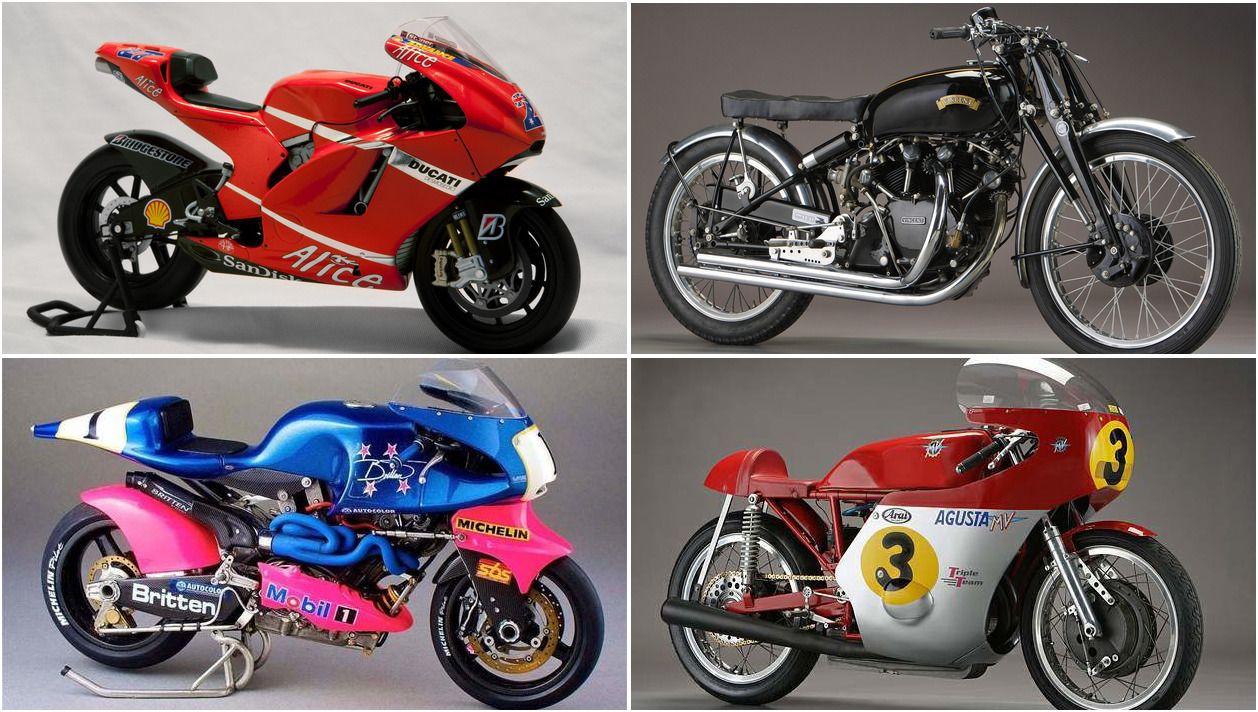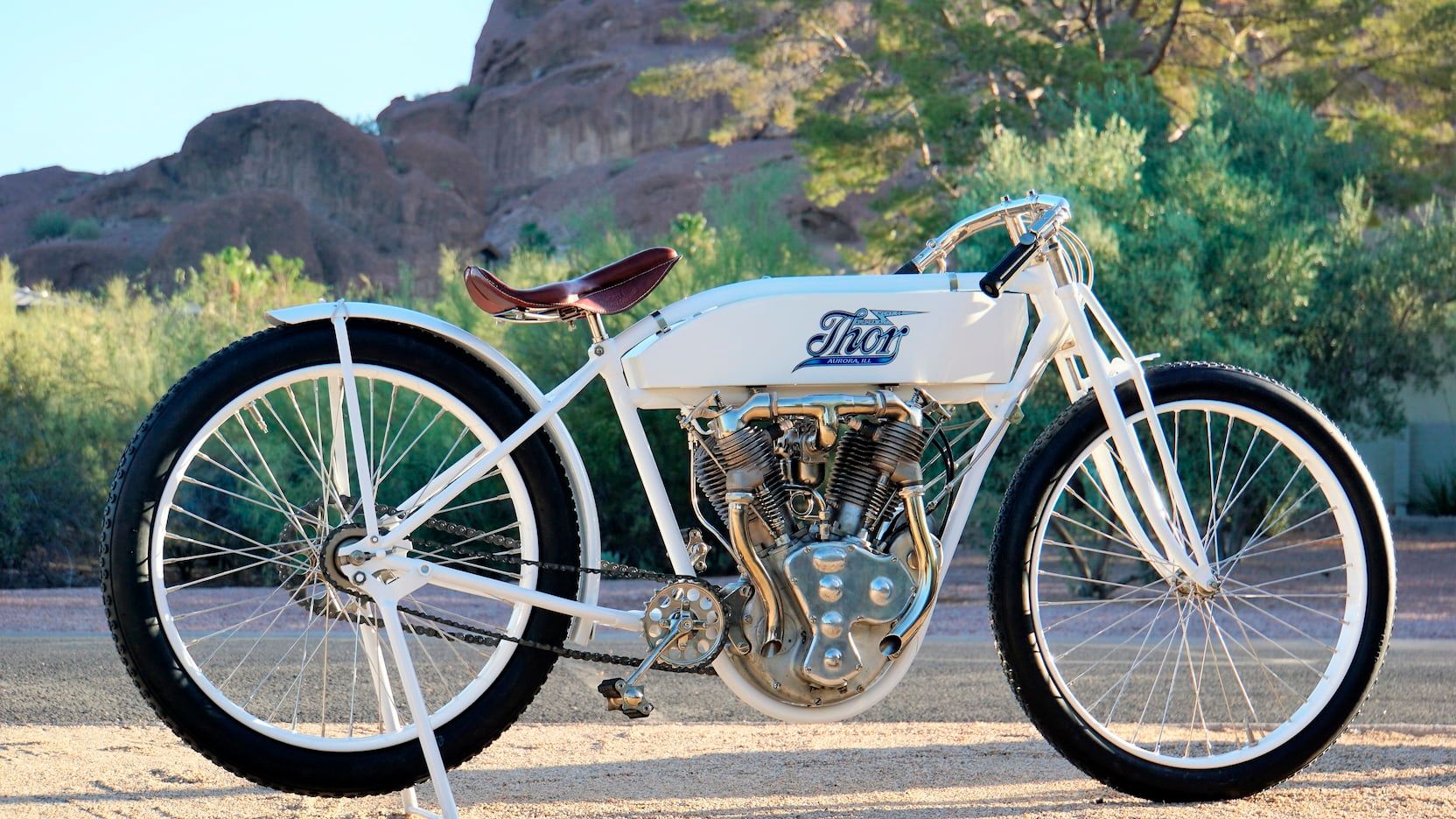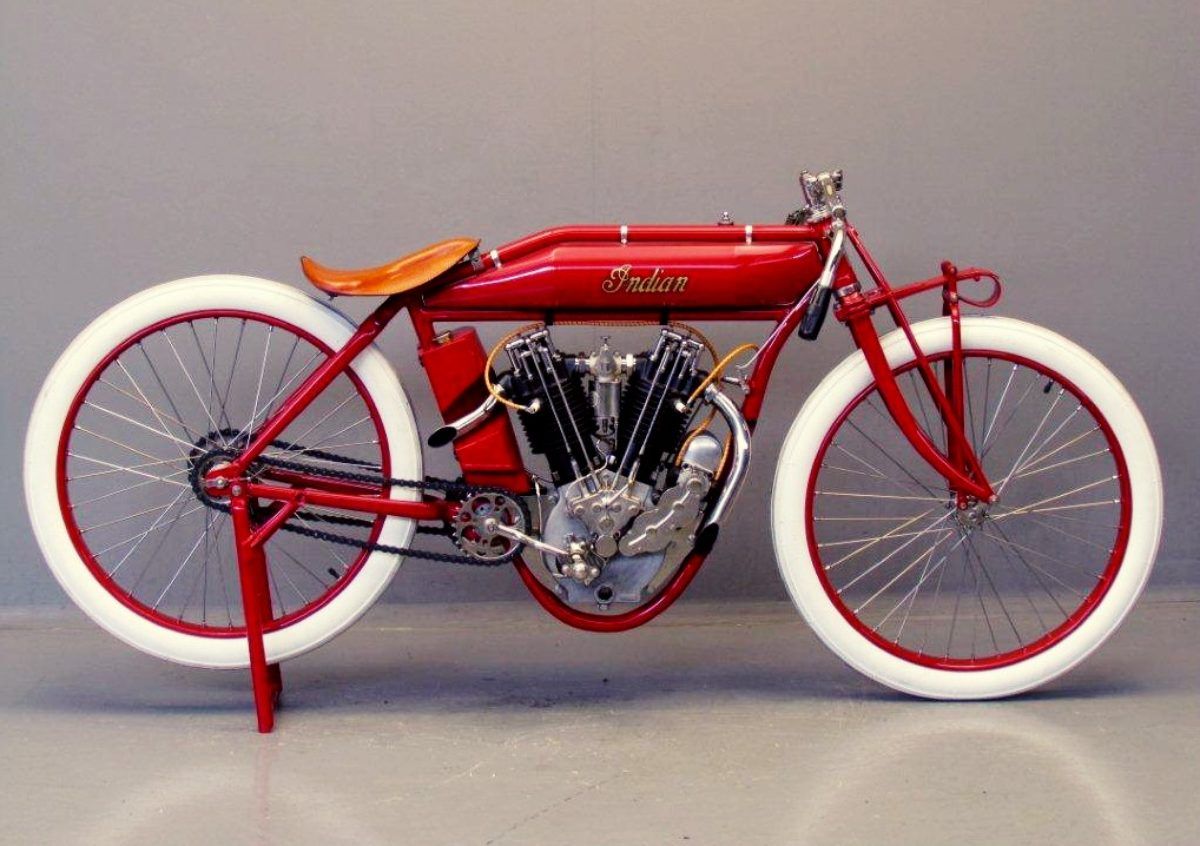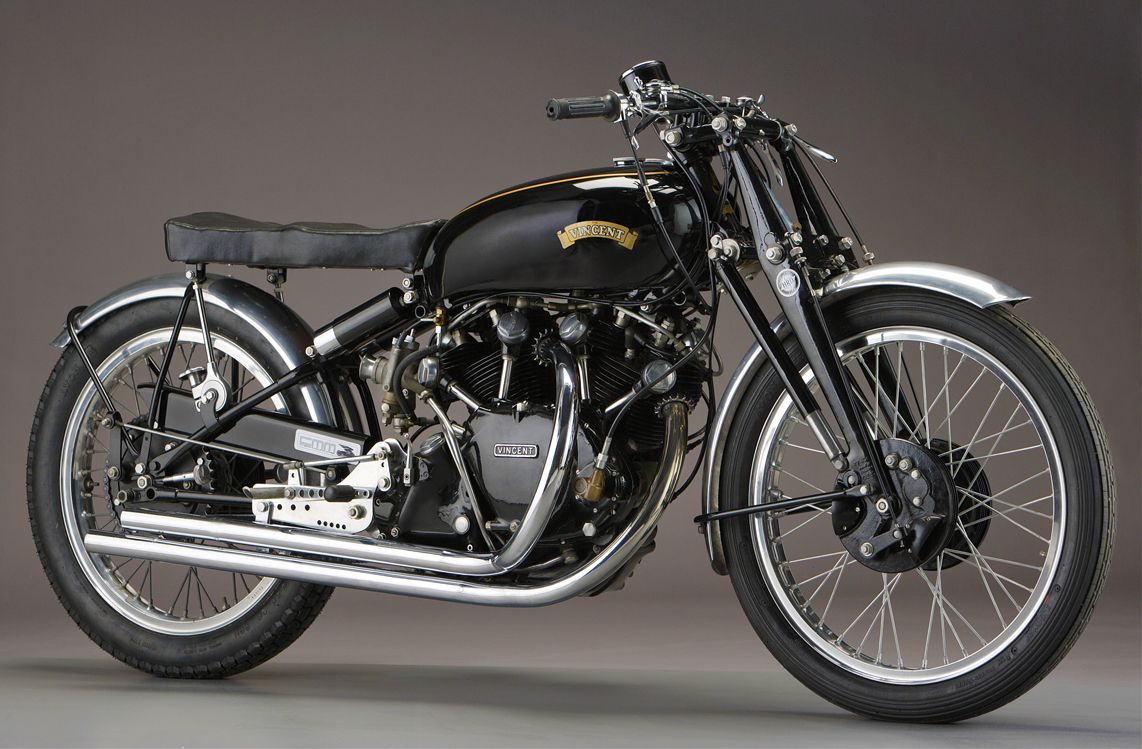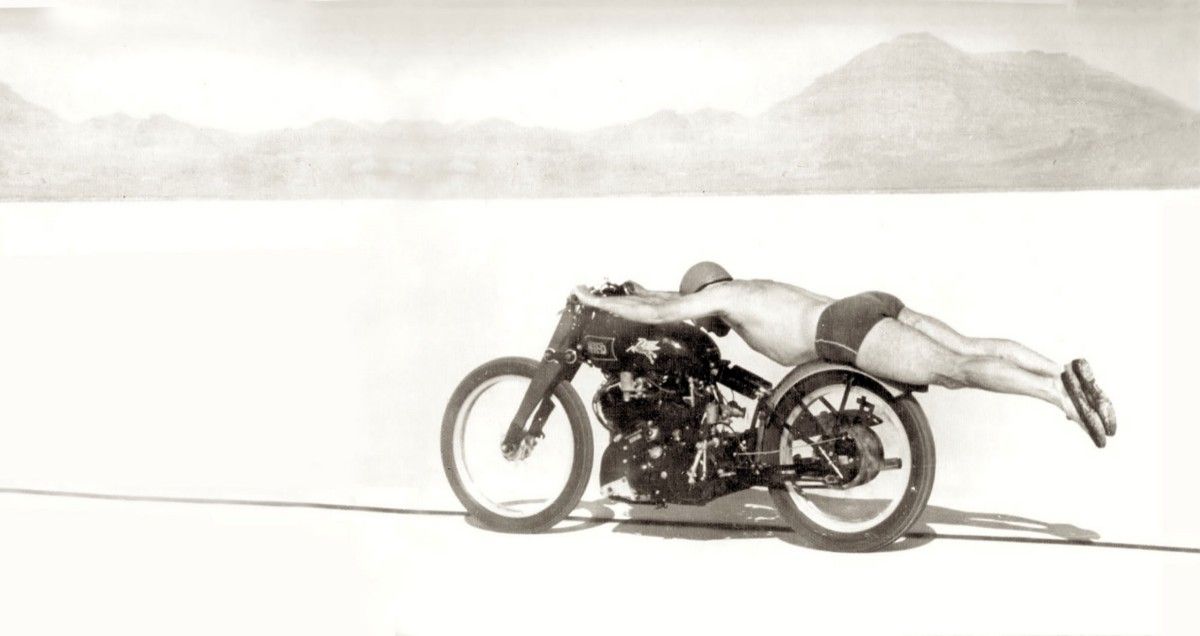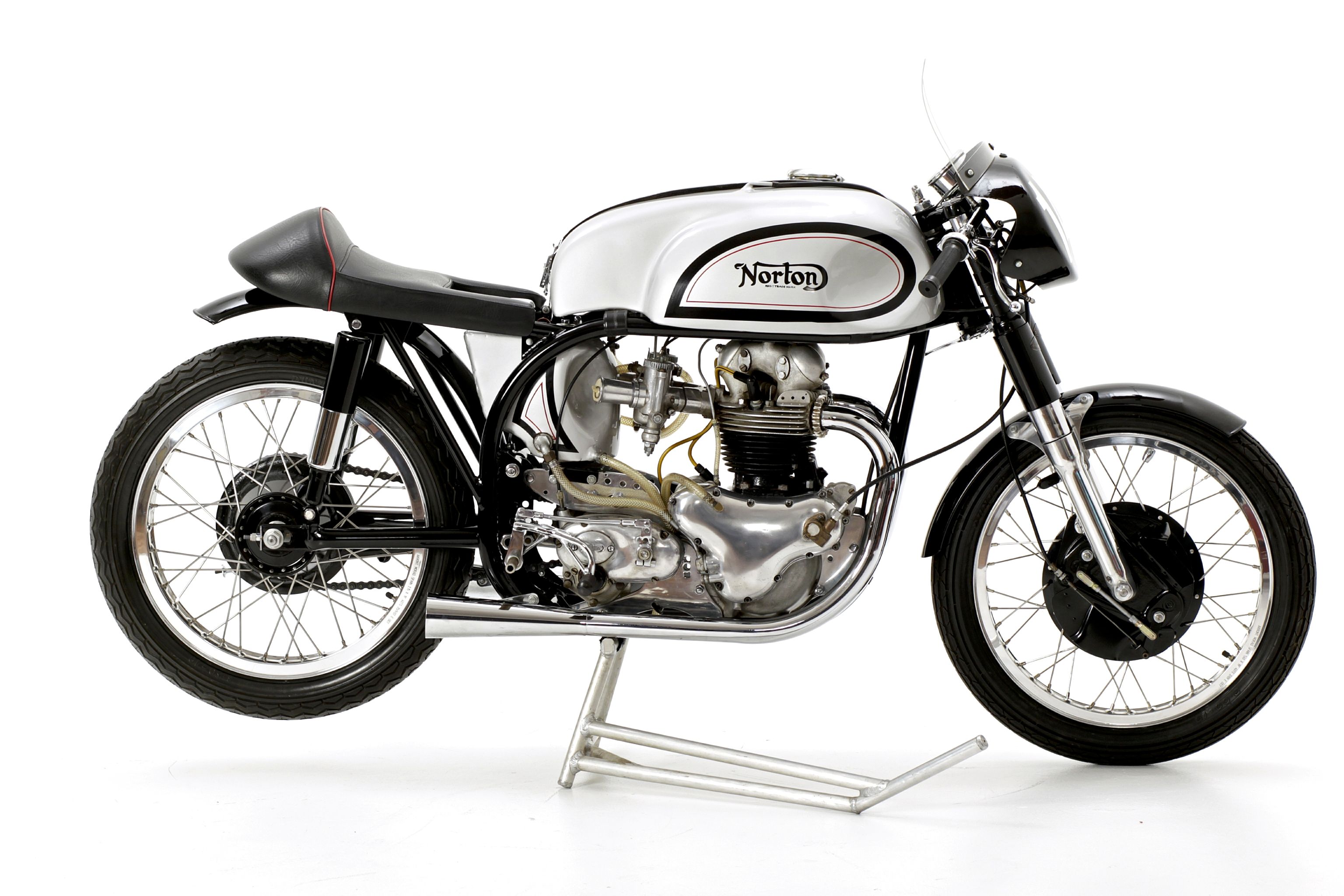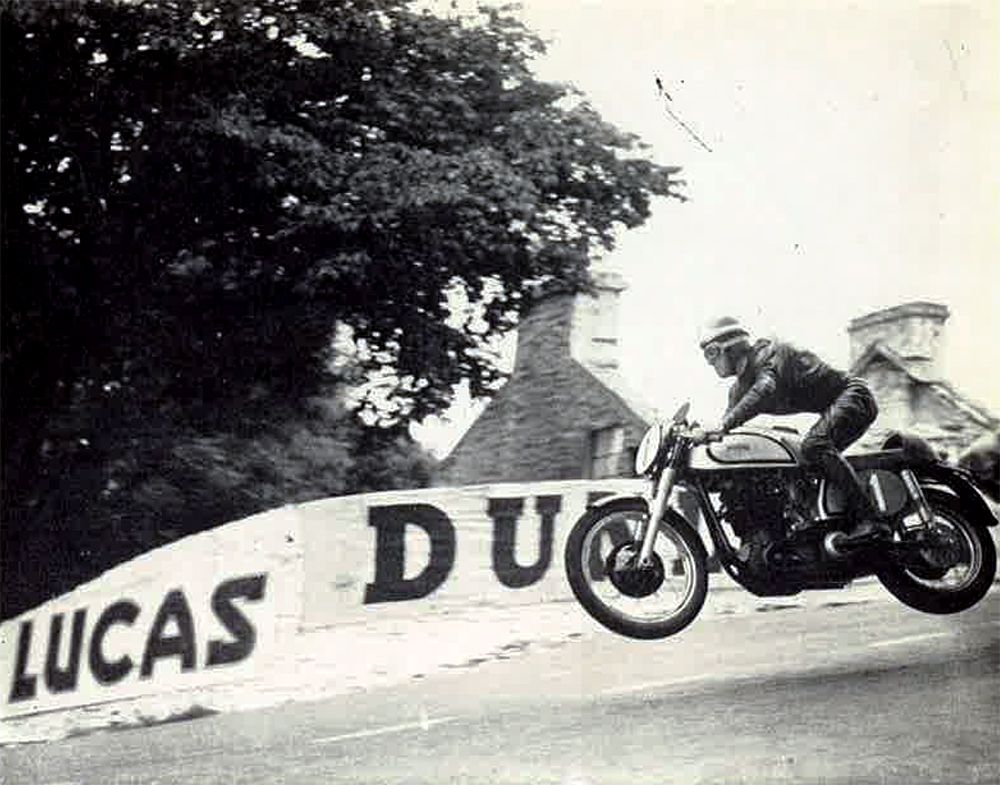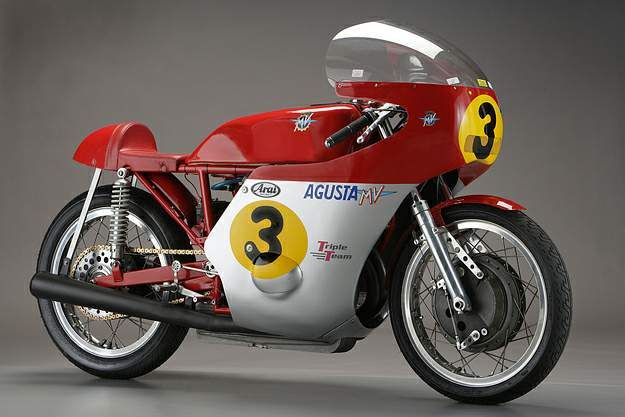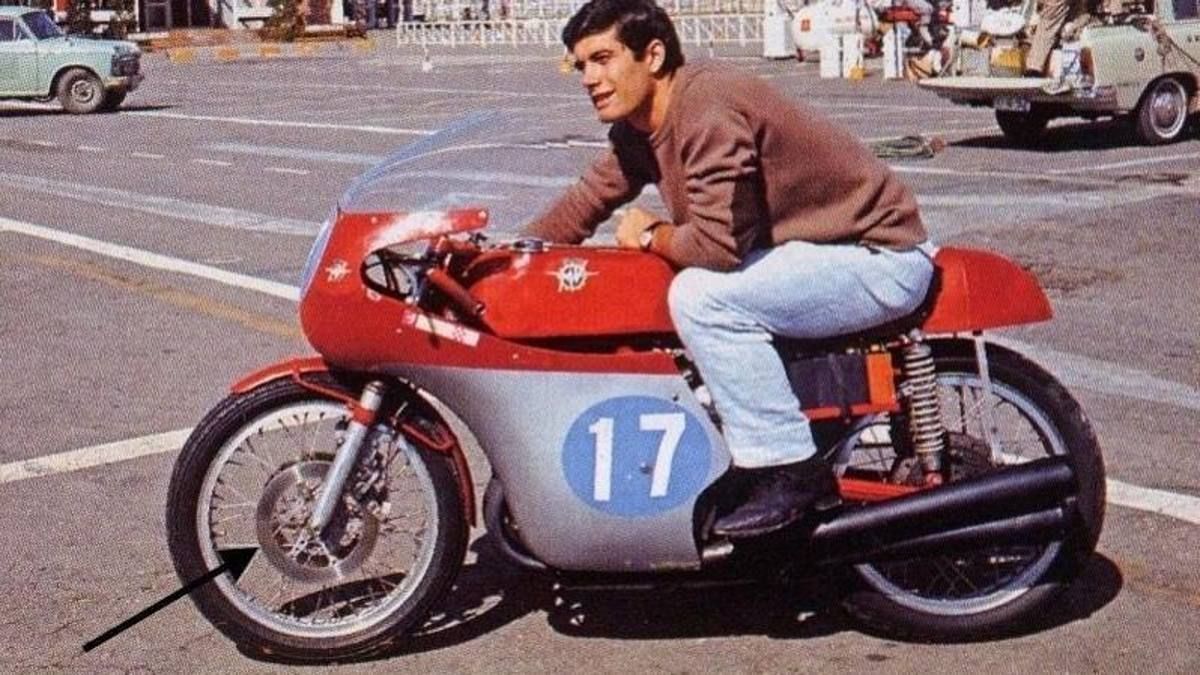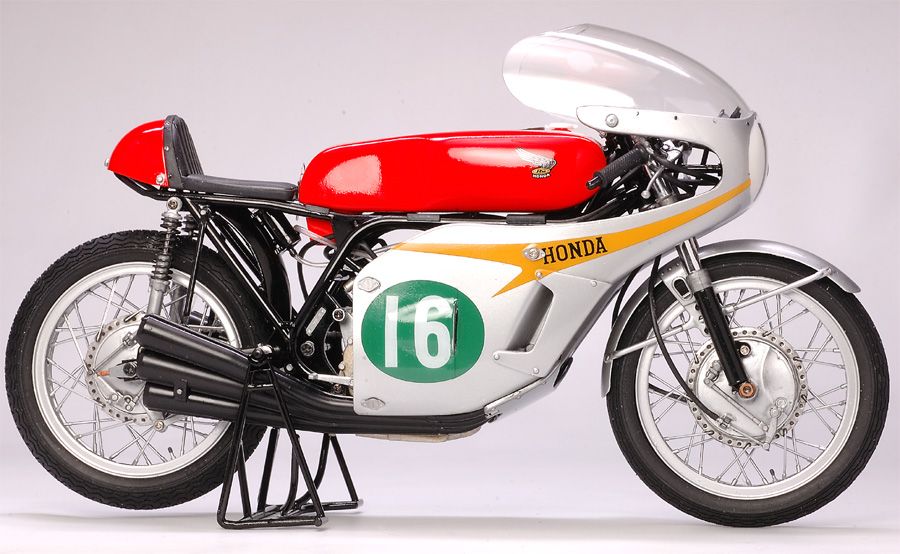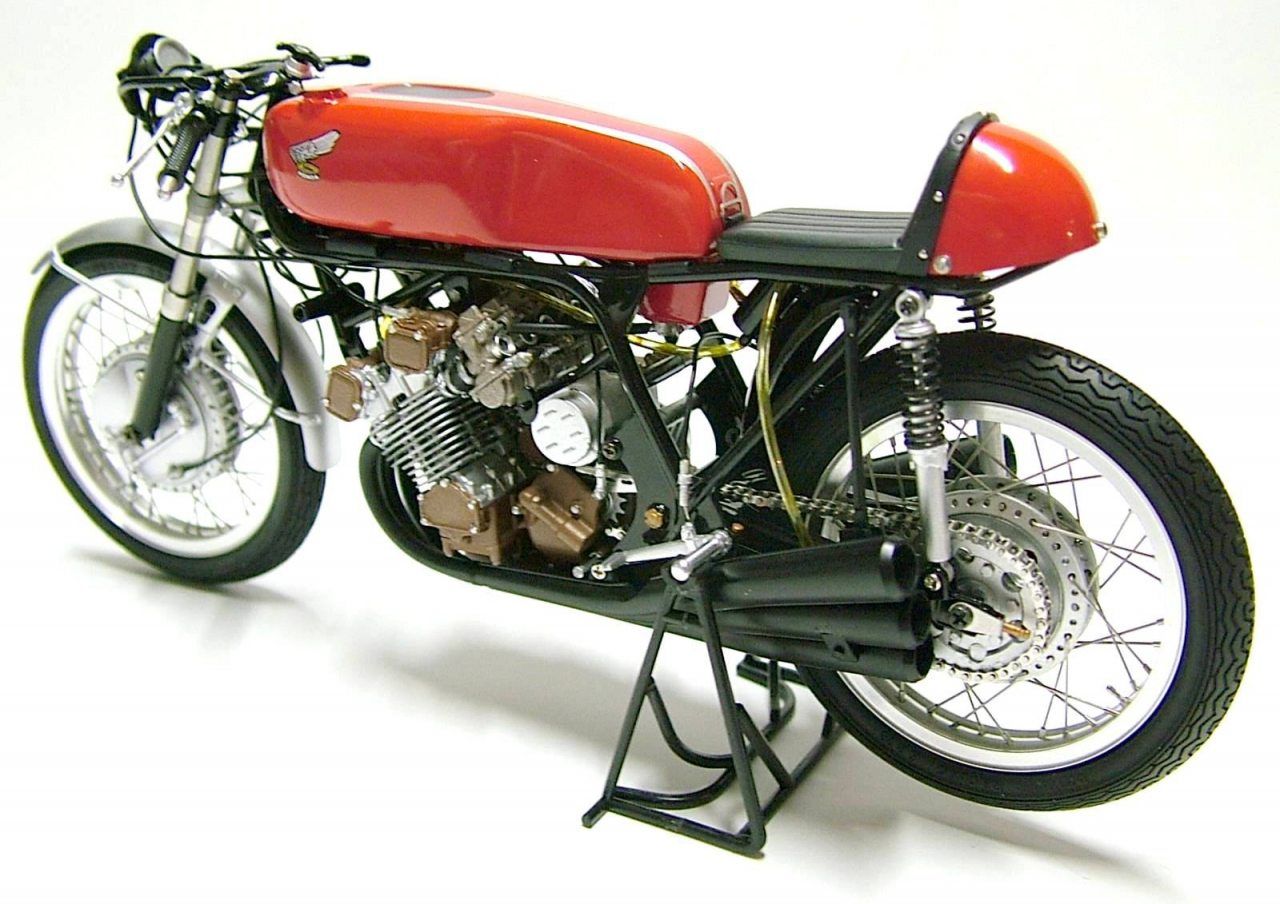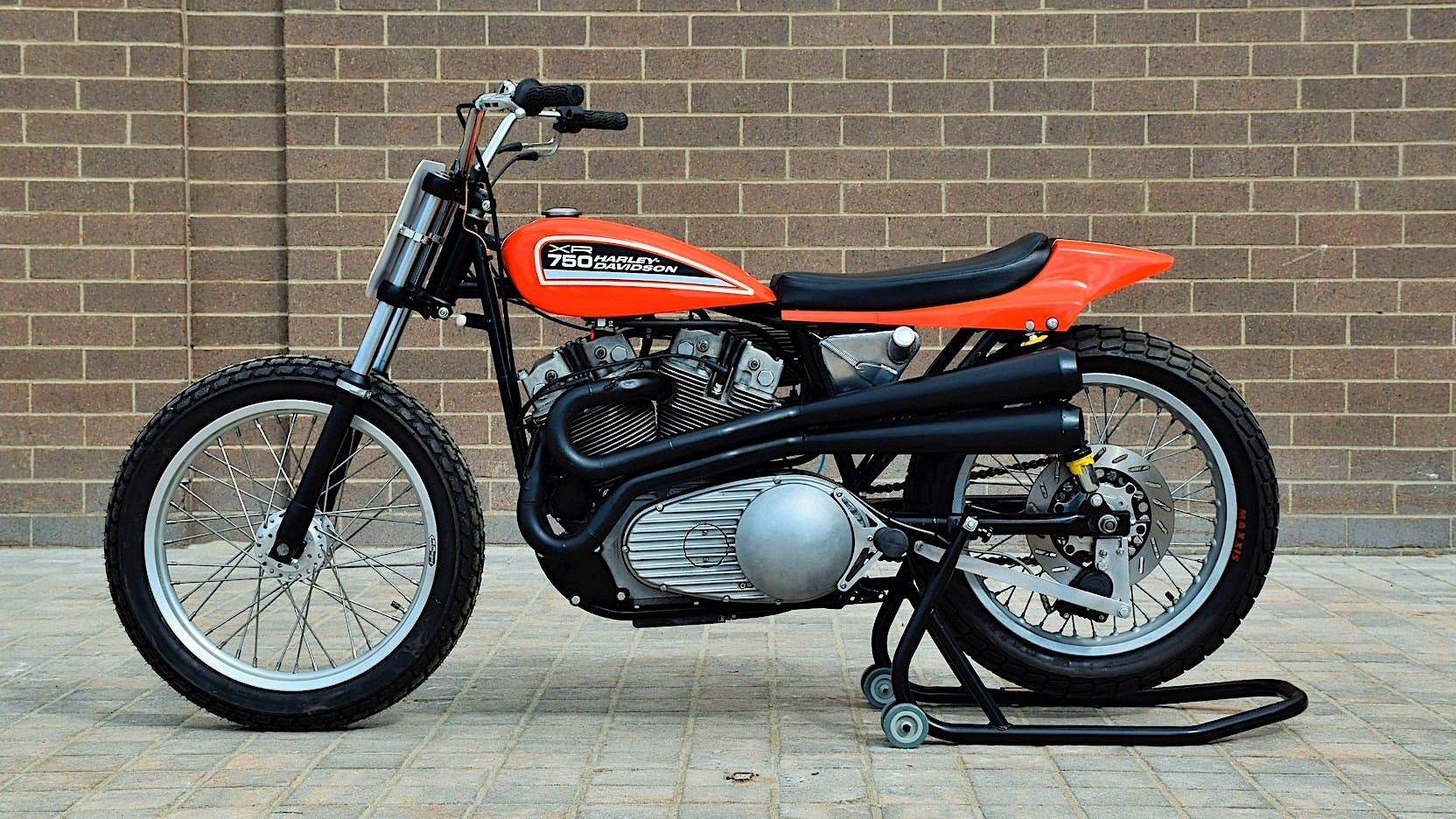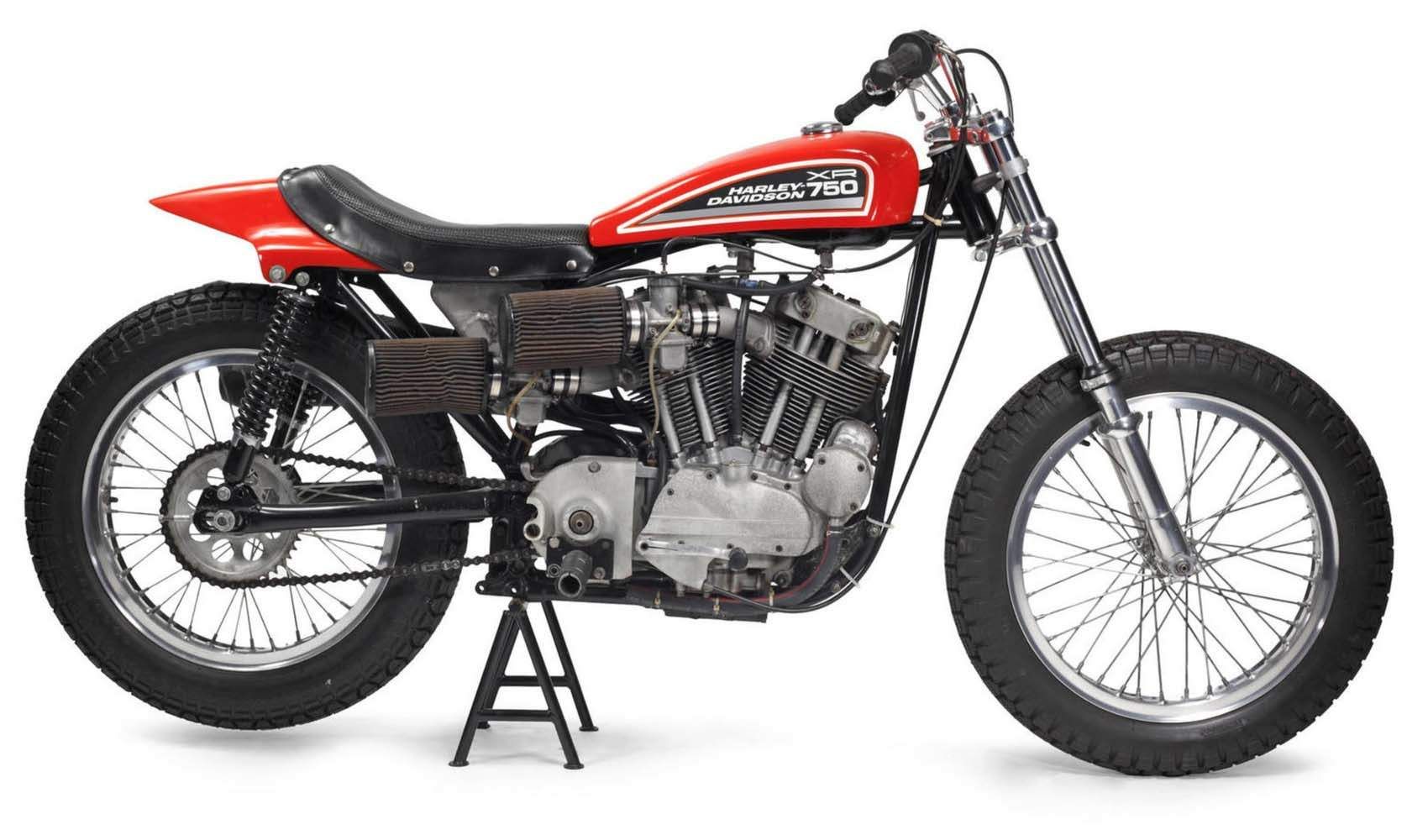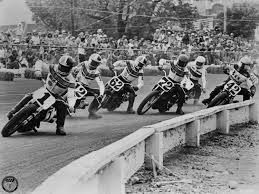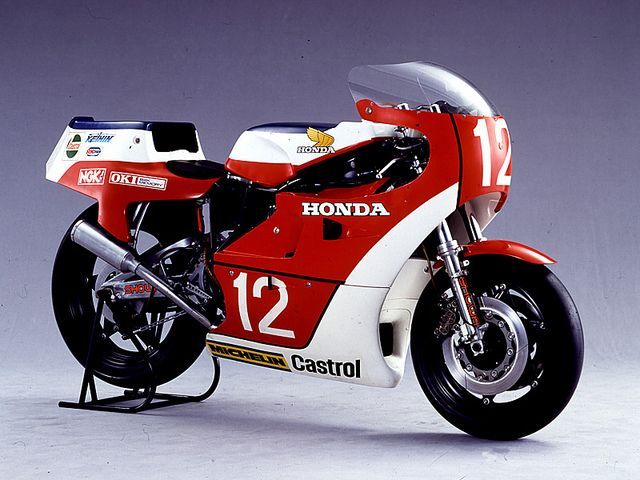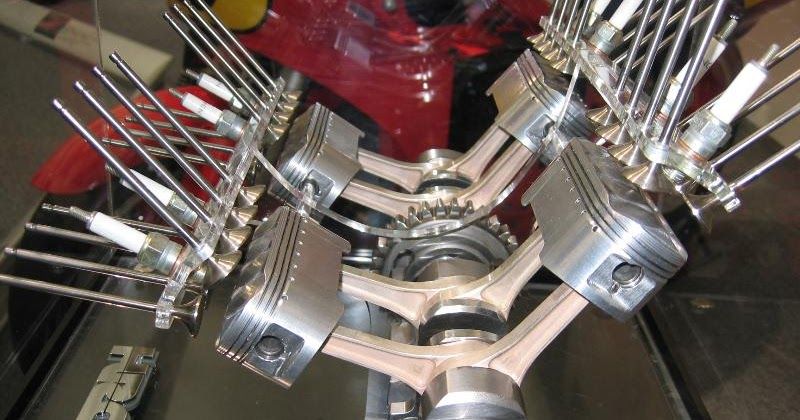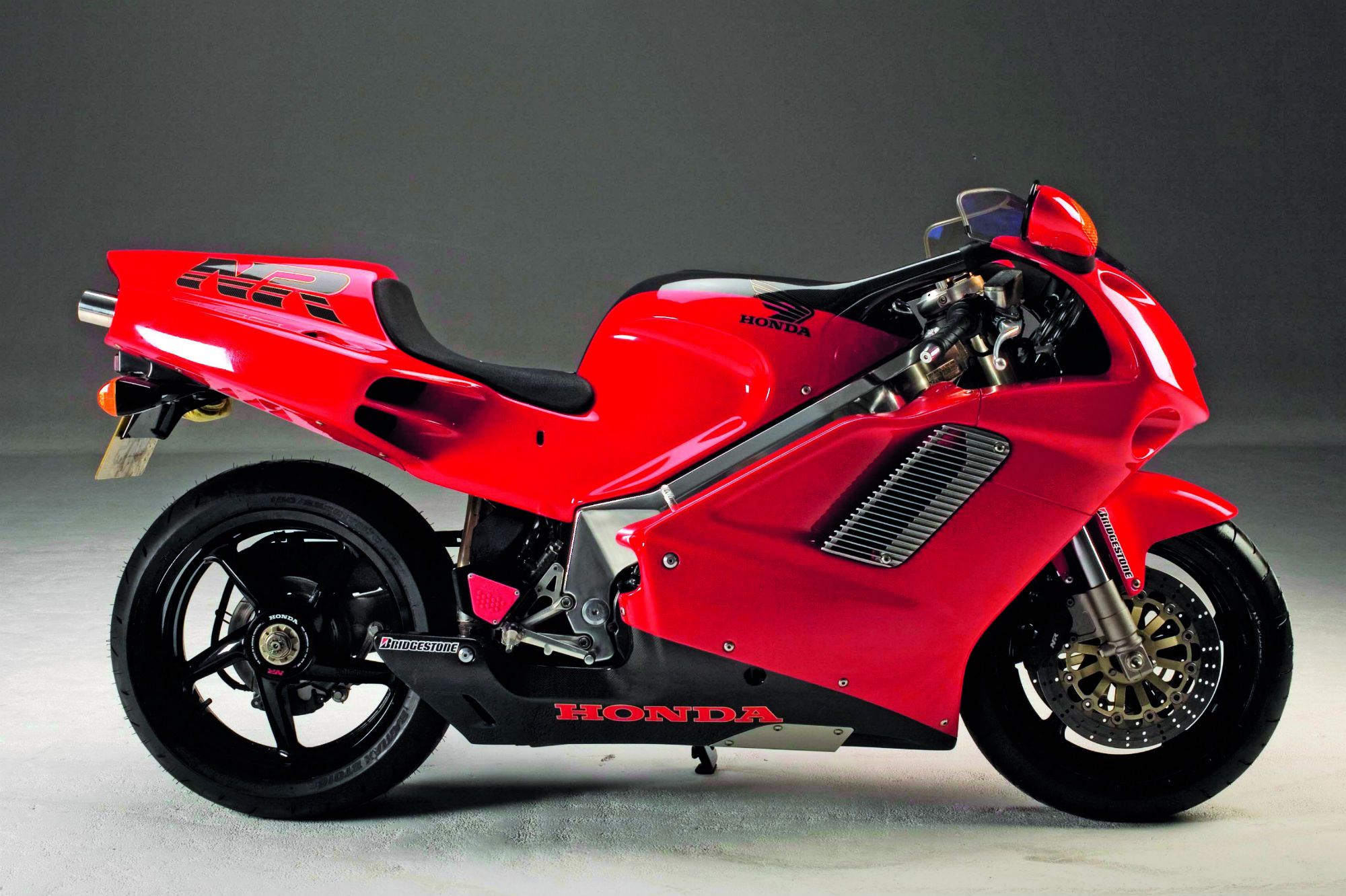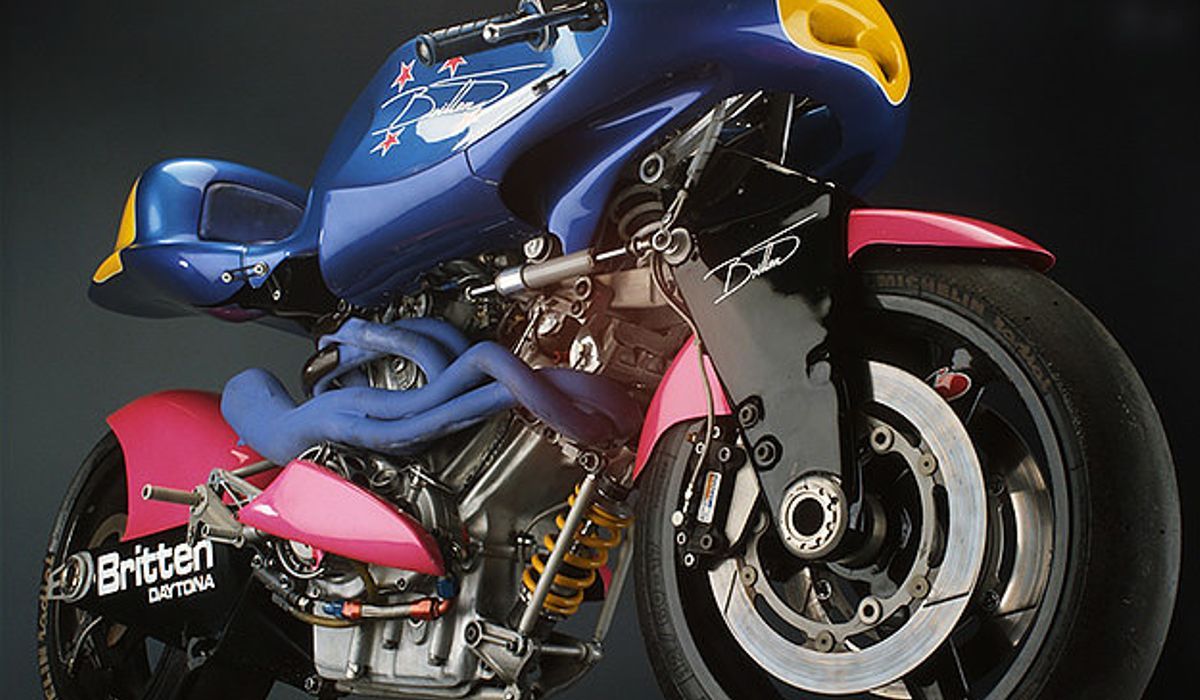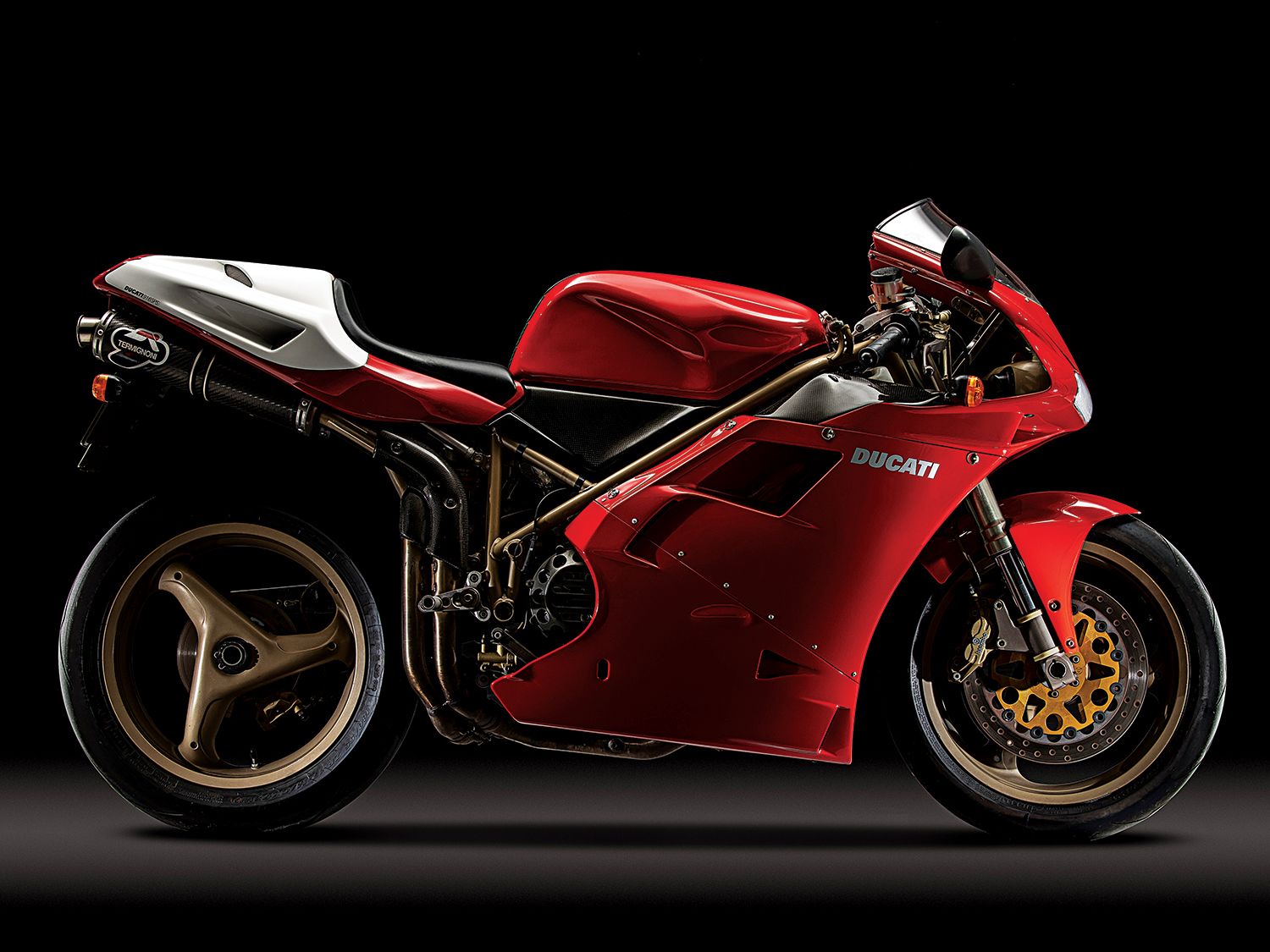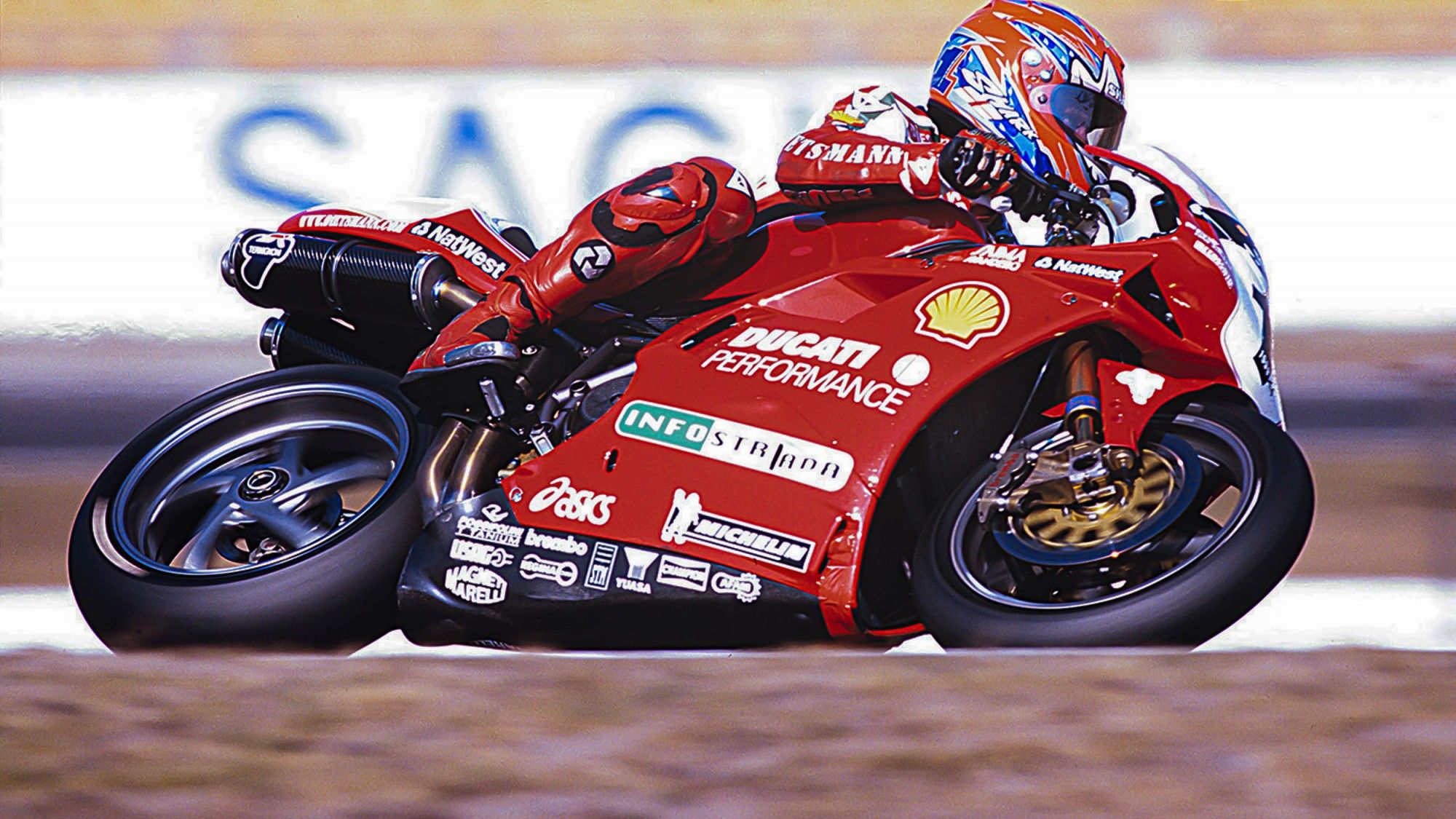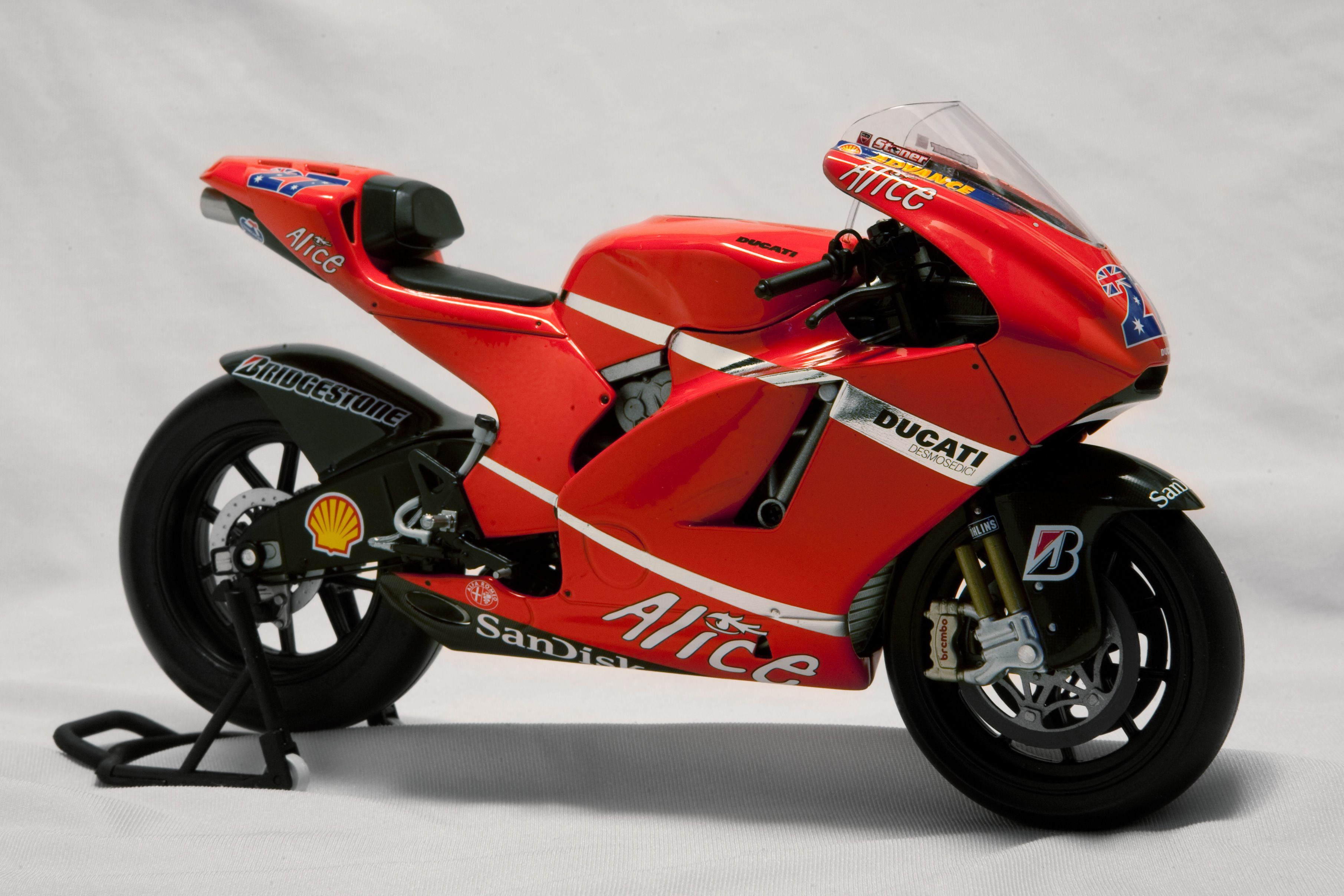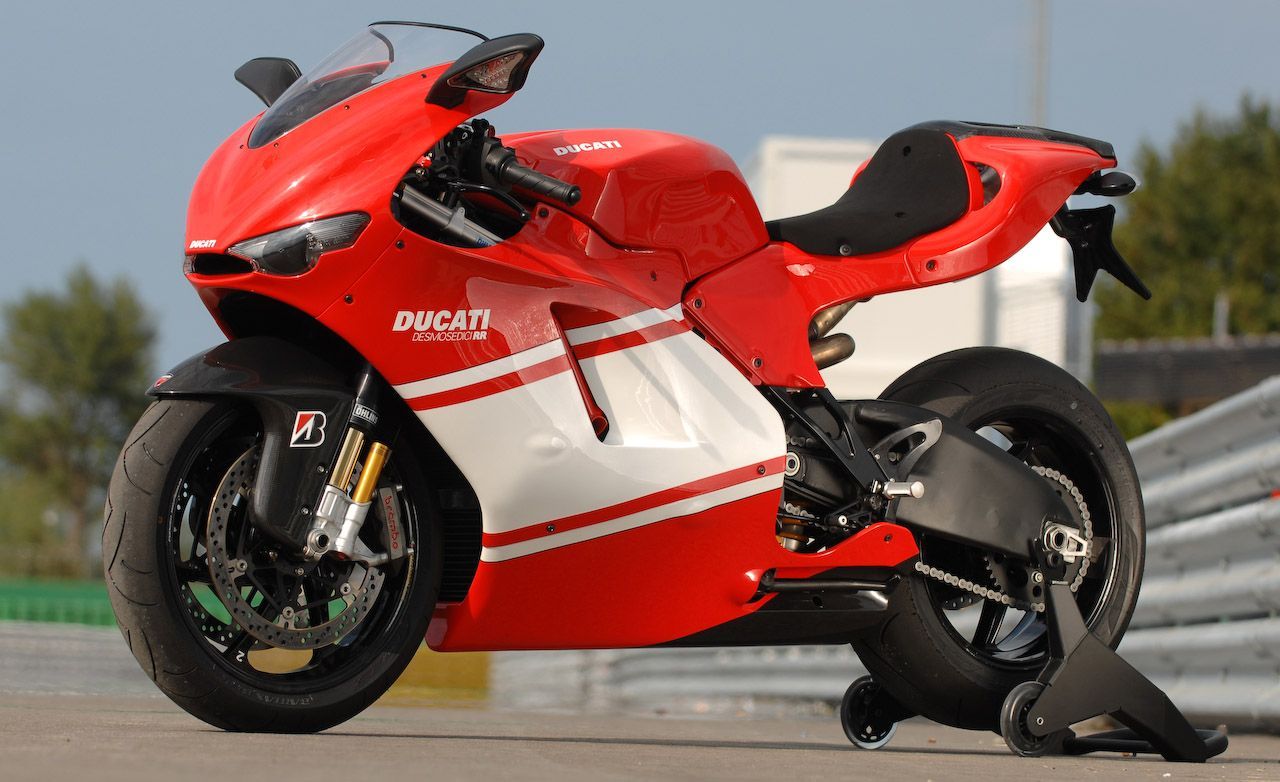Racing bikes are designed, first and foremost, to go fast. But, somewhere along the way, some of them manage to be just incredibly beautiful as well as hugely successful. Sometimes, the physical beauty is tied up with the incredible engineering involved. This is our top 10 of the most beautiful racing motorcycles ever produced.
Racing bikes are built with only one thing in mind: to go as fast as possible. Little thought is given to aesthetics, but somehow, over the years, the functionality of design has given rise to some incredibly beautiful machines.
Since the 1980s, the external form of racing machinery has reached a point where, without all the sponsor-influenced paint jobs, they are difficult to distinguish from each other: the fully-faired form has become ubiquitous and no one manufacturer hits upon a new aerodynamic idea that isn’t adopted by all other teams.
That’s not to say that there haven’t been some beautiful racing bikes in the last 40 years, but it is the colors and sponsor decals that define them: the sponsor-influenced designs enhance the bare lines of the bike and those examples become truly iconic. In the same way, the sheer engineering audacity of some examples bestows a form of beauty.
Another factor that makes them beautiful could be their success as racing machinery. History does not remember fondly the bikes that failed to live up to their promise but the truly successful machines have an appreciation of their lines thrust upon them.
1910-1930 Board Track Racers
Board track racing was hugely popular in the U.S. in the 1910s and ‘20s. The races drew huge crowds to the purpose-built, steeply-banked tracks that were springing up all over the country and making heroes out of the riders, not to mention household names of the manufacturers.
The motorcycles themselves were as basic as it was possible to make them: a spindly frame, two wheels, handlebars, a small petrol tank, and a stonking great V-twin engine. They were striking not only in their bright-colored paint jobs, but in their stark simplicity that was purely functional and yet utterly beautiful because of it.
Looking at them now, board track racers are a reminder of the once-great American motorcycle industry, with names such as Thor, Cyclone, Flying Merkel, and Excelsior alongside Harley Davidson and Indian.
Board track racing was supremely dangerous and the tracks themselves were impossibly expensive to maintain, while the racing was often processional, leaving the door open for more unpredictable - and cheaper to establish - flat-track racing to take over in the eyes of the public.
1950 Vincent Black Lightning
Phil Vincent bought HRD motorcycles in 1928 and started producing his expensive - and fast - motorcycles that same year. They used a 1000cc V-twin which was a stressed member of the frame: a box-section spine that incorporated the headstock was bolted to the top of the engine and the cantilever rear suspension was bolted to the rear of the engine.
The 1948 Vincent Black Shadow was, at the time, the fastest production motorcycle in the world, with a top speed of 125mph. The Black Lightning was a built-to-order racing version of the Shadow, supplied in racing trim with magnesium alloy components, racing tires on alloy rims, rear-set foot controls, a solo seat, and aluminum mudguards. This reduced the Lightning's weight to 380 pounds.
The engine was based on standard parts, but upgraded with higher-performance racing equipment: higher-strength con rods, larger inlet ports, polished rocker gear, steel idler gears, racing carburetors, and was available with compression ratios between 6.8:1 and 12.5:1. This resulted in 70 horses and a top speed of 150 mph. Only 31 Black Lightnings were ever built.
The Black Lightning is the subject of one of the most famous motorcycle photographs of all time, depicting Rollie Free riding his Black Lightning at the Bonneville Salt Flats wearing only his bathing trunks. Wearing his leathers, he had achieved 148.6 mph, so, in order to reduce drag and weight, he stripped them off and, lying prone on the bike, he broke the 150mph barrier.
1950 Norton Manx
The Norton Manx Grand Prix model first appeared in 1936 and had telescopic forks and plunger rear suspension. But, it was the 1950 version of the racing bike that is most commonly associated with the name Manx Norton (Manx being a name for the Isle of Man, where the famous TT races are held every year. Nortons competed there every year it was run from the first race in 1907 right up to 1970).
In 1950, the McCandless brothers designed and built the ‘Featherbed’ swing arm frame, so-called after Norton rider Harold Daniell commented that it felt like 'riding on a feather bed’ compared to the old plunger frame.
The new machine was immediately successful and would remain so long after multi-cylinder engines from the likes of Gilera and MV Agusta - and later Japanese machinery - had become popular. Many privateers ran Manx Nortons in international races and at the Isle of Man TT, and, even though the last Manx had been built by Norton in 1962, the model won its last Grand Prix at the 1969 Yugoslavian Grand Prix.
The Manx Norton even played a significant role in the development of post-war racing and the British motor racing industry as well as the rise of the popular British café racer scene.
In 1950, new regulations in motor racing included the 500cc Formula 3. For many years, the J.A.P. Speedway engine was popular, but the single-cylinder Manx engine produced much more power and became the engine of choice. Norton wouldn’t sell engines on its own, so F3 entrants bought whole Manx Nortons just for the engine. The Featherbed chassis were then sold on and fitted with Triumph 500cc engines to create Triton café racers.
Formula 3 not only introduced Cooper Cars to racing - they would go on to revolutionize Formula 1 racing with the first post-war, rear-engined racing cars - but also gave a certain Stirling Moss his start in racing.
1956 MV Agusta 500cc Grand Prix
The iconic Grand Prix bike of the 1950s, ‘60s, and well into the ‘70s, the red and silver machines from Italy were not only some of the most beautiful 500cc GP bikes ever, but successful to the point of boredom with riders of the caliber of Surtees, Hailwood, Agostini, and Read winning championship after championship. Between 1956, when Surtees won the 500cc Championship, and 1976, when MV finally withdrew in the face of the two-stroke revolution, the company won over 3,000 international races, 38 riders’ world championships, and 37 manufacturers’ titles.
Giovanni Agusta was an aviation pioneer in the early years of the 20th century and went on to be one of the most important European aircraft manufacturers between the World Wars. After the Second World War - and to this day - Agusta specialized in helicopters and, in 1946, they started building racing motorcycles.
The first was a 98-cc two-stroke but, by 1947, they had turned their attentions to four-stroke technology and the rest, as they say, is history.
1966 Honda RC166 250cc Grand Prix
When Honda first appeared at the Isle of Man TT in 1959 with a small team of 125cc machinery, no one had any knowledge of the fledgling Japanese motorcycle industry, let alone any idea of how dominant it would become not only in racing, but in motorcycling in general.
Honda brought a win-at-all-costs philosophy to Grand Prix racing, an approach that led to some of the most incredible technological developments through the years.
Honda engineers figured that the way to more power was through higher revs and the path to higher revs was more cylinders. In the smaller-displacement classes of GP racing, the likes of Yamaha and Suzuki had turned to two-stroke technology but Honda reasoned that as two-strokes had no bearing on their commercially available motorcycles, they would not go the two-stroke route for their racing bikes.
Still, the two-strokes were beating Honda’s four-strokes so something had to be done and that involved huge amounts of money and resources and lots of cylinders in their engines!
While the twin-cylinder 50cc engine was outrageous, even that paled next to the 1964 250cc engine with no less than six cylinders. By 1966, Hailwood had signed for Honda, leaving an increasingly Agostini-dominated MV Agusta, and although he wouldn’t again win the Blue Riband 500cc championship, he was utterly dominant in the 250 and 350cc classes.
In 1966, he won every 250cc round on the Honda and took the title again in 1967, although this time not without a fight from Phil Read on the two-stroke Yamaha. In 1967, Honda increased the displacement to 297cc to make it eligible for the 350cc class: Hailwood won that as well!
By 1968, Honda - and, by extension, Hailwood - were out of GP racing. Honda had poured millions of dollars into its racing team and had won everything: so much so, that they felt there was nothing left to achieve, not to mention the fact that the rise of the two-stroke was inevitable (although MV Agusta would continue to win championships with its four-strokes well into the 1970s).
1969 Harley Davidson XR750
By 1937, flat-track racing was becoming increasingly expensive as factories poured money into winning, leaving the privateers out in the cold. The A.M.A., therefore, established Class C, which was a production-based class for bikes that could be bought off any dealer’s showroom floor.
At first, only side-valve engines were permitted due to, it is alleged, Harley and Indian wanting to outlaw faster overhead-valve European machinery: if you ran a side-valve engine, it could be 750cc, but overhead valve engines could only be 500cc. H-D built the KR, with a 750cc side-valve V-twin engine and it was hugely successful.
Then, in 1969, the A.M.A. revised the rules to allow European and Japanese machinery to compete on equal terms with the Americans. Thus, the Harley Davidson XR750 was born, featuring a highly modified, overhead-valve Sportster engine in a new chassis. It was immediately successful and the early 1970s were a golden age for flat track and Grand National racing as the Americans and British and Japanese fought it out.
The XR750 is synonymous with the careers of the likes of Mert Lawwill, Mark Brelsford, Cal Rayborn, and Jay Springsteen, and it went on to be the most successful race bike in the history of A.M.A. racing. Evel Knievel also switched from British motorcycles to the XR750 in 1970 and used them up to his final jump in 1977.
The XR750 was winning races and championships up to 2008, surely the longest career of any race bike.
1980 Honda NR500
When Honda decided to return to racing in the very late 1970s, the company was still adamant that its bikes would be powered by a four-stroke engine, swimming against the tide of two-stroke technology that would remain dominant right up to 2001.
By this time, however, the regulations stipulated that a 500cc engine could have no more than four cylinders (actually, to be accurate, it could have no more than four combustion chambers, which is relevant in this case) but Honda was convinced that the way to more power (necessary in order to fight on equal terms with the two-stroke engines of their rivals) was through more cylinders.
The solution was as radical as it was clever. They designed a ‘V-8’ engine which was, in effect, a V-4. In that, it had four large oval combustion chambers and thus was within the letter of the law. Each ‘cylinder’ was, in effect, two cylinders without a dividing wall between them.
It was massively complex: each oval cylinder had eight valves and each piston was supported by two con rods and yet the whole engine was no bigger than a regular inline four-cylinder. Yet again, Honda had produced a marvel of miniaturization - 500cc total, don’t forget!
Sadly, it was never successful and Honda finally gave in and produced the two-stroke NS500 V-3 engine, which took Freddie Spencer to the 1983 500cc World Championship.
The NS500 spawned the NR750 endurance racing bike and also the NR road bike, which used elliptical pistons with curved long sides in order to try and solve the combustion chamber sealing problems that had affected the racing version. The NR was, at the time, the most expensive production bike in the world.
1991 Britten V1000
In 2008, British motorcycle journalist Alan Cathcart wrote that, ‘It's incredibly ironic that instead of Europe or Japan, the most sophisticated and technically advanced motorcycle in the world comes from New Zealand.”
At first glance, it sounds terribly condescending to suggest that such a thing could have happened until you realize that the bike Cathcart was talking about was not built by a huge multinational company, but by one man in his shed at the back of his house.
The Britten V1000 has rightly gone down in history as an incredible achievement of engineering, even more so as it actually won races!
It’s not even as if John Britten used a proprietary engine: no, he built everything himself - engine, wheels, forks, cooling system, exhaust system, and bodywork. Not to mention, the engine data logging software. The only bought-in parts were the shock absorbers, brake calipers, and gearbox internals.
Carbon fiber was used throughout - Britten taught himself how to manufacture components from the material - and there was no chassis as such, the engine being a stressed member, to which the double-wishbone front forks and rear swing arm were attached. The radiator was mounted under the seat and the rear shock absorber was actually mounted vertically at the front of the engine, being actuated by rods from the swing arm.
Sadly, John Britten died at the young age of 45 but the ten Britten V1000s that he built are a fitting memorial to this gifted engineer who dared to think outside the box and proved it could work.
1994 Ducati 916
This the bike that changed everything for Ducati, both on the road and the race track. Designed by Massimo Tamburini, the 916, in the words of author Mick Walker, “was not simply the latest superbike, but the best there had ever been. It set new standards of performance, handling, and braking, but also style and charisma. ... The 916 changed the face of sports bikes in a way that only the original Suzuki GSX-R750 had managed a decade earlier.”
The 916 was an immediate success, not least in the U.S., where the whole allocation of bikes had been sold before the first one even arrived in the country!
If the 916 was a sensation on the road, then it was even more impressive on the race track, where it won the World Superbike Championship - rider’s and manufacturer’s titles - in 1994, ’95’, ’96, and ’98, in the hands of Carl Fogarty and Troy Corser. Developments of the 916 bike, the 996 and 998, also continued the success on the race track, with Fogarty taking two more Superbike titles.
2007 Ducati Desmosedici GP7
Ducati entered Grand Prix racing (now called MotoGP and allowing a displacement of 990cc) in 2003 and quickly established itself as a front runner, winning races and taking podiums almost straight away.
At that point, motorcycle aerodynamics were concentrated wholly on making the bikes as efficient - or slippery - as possible, allowing for a higher top speed for a given engine power output, particularly important in 2007 as the permitted engine size had been reduced to 800cc. Ducati had a power advantage over its rivals and Casey Stoner took the rider’s world championship in 2007, while Ducati also won the constructor’s title that year.
Compared to today’s Ducati GP22 MotoGP bike, with its front-mounted spoilers and other aerodynamic tweaks to the bodywork, the GP7 is wonderfully uncluttered and pure. Any doubts about the beauty of the early Ducati MotoGP bikes can be easily dispelled by looking at the limited edition, road-going version, the Desmosedici, of which Ducati built 1500 in 2006. Rarely has a bike’s bodywork been so smooth and unadorned, and, yes, beautiful.
FAQ
Q: Which Is The Most Beautiful Bike?
A difficult question to answer as beauty is in the eye of the beholder but bikes such as the Brough Superior SS100, Ducati 916, and MV Agusta 500cc Grand Prix bike have often been called the most beautiful bikes ever.
Q: Which Bike Is Very Stylish?
Cruiser motorcycles are often described as being the most stylish, whether they have come from the factory or from a custom shop.
Q: What Is The Coolest Looking Bike?
If you're talking cool, then it has to be a chopper and the coolest chopper of all time is the Harley Davidson-based chopper used in the movie 'Easy Rider' and nicknamed 'Captain America'.


